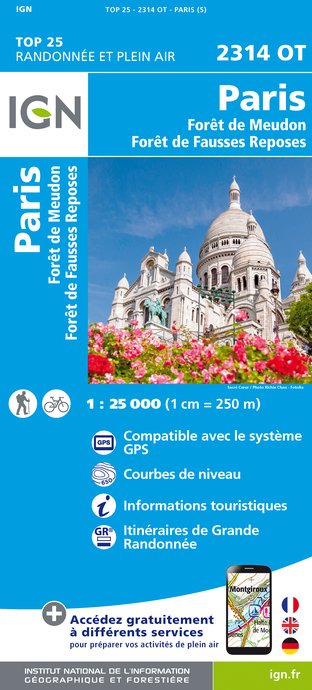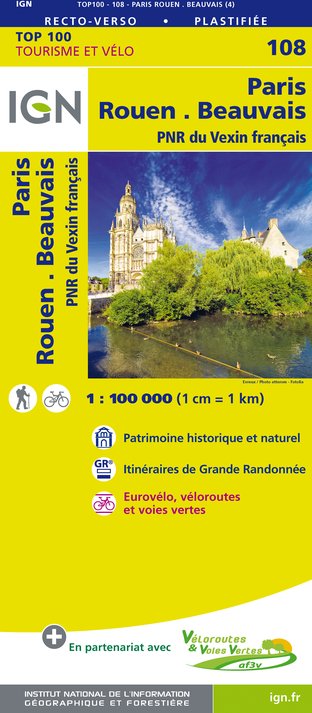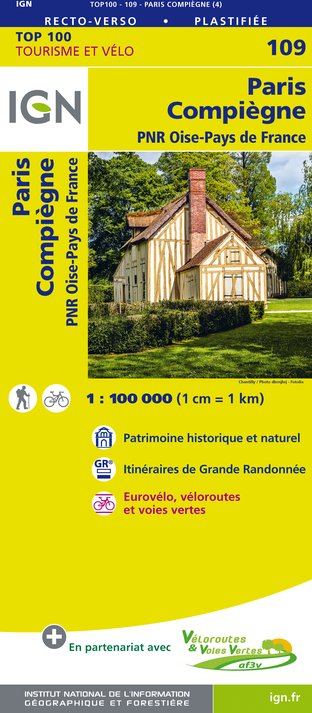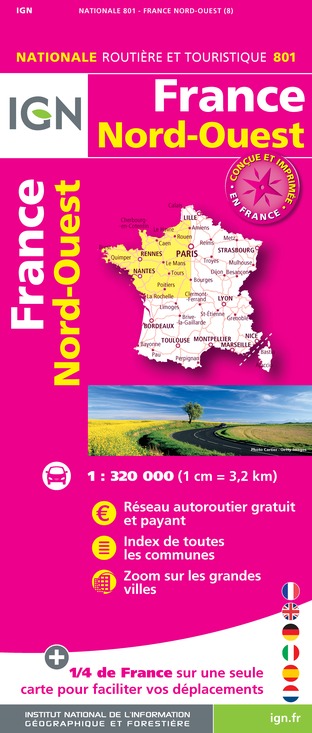警报
警报
练习类型
徒步
自行车
Presentation
地图
兴趣点
Cirkwi 简报
评级和评论
周围的看点
1878年世界博览会


信用 : Musée carnavalet
Cirkwi 简报
探索巴黎的心脏:穿越1878年世界博览会之旅
跟随1878年世界博览会的足迹,这个令人神往的旅程邀请您探索巴黎和库尔布瓦的历史,由Balades Fluviales Fabienne Lemoine Fondateur的富有想象力的思维呈现。沉浸在一段时间的叙述中,它回溯到巴黎历史上的一个关键事件,创新和美丽在此前所未有的规模上相遇。在这些标志性地标上悠闲漫步,体验巴黎的精髓,以及经受时间考验的遗迹。这次冒险不仅仅是一次旅行;它是过去的一个门户,经过精心策划,献给那些好奇和梦想家们。
必要的行程技术细节
这个行程总长度约为10.78公里,海拔范围从最低点的24米到最高点的65米。您将面临一段缓和的起伏之旅,总的正海拔变化在153到143米之间。指定的路线主要适合行人,对于喜欢悠闲散步的人来说是一条理想的路径。非常适合一天的探索,为不同健身水平的参与者提供了一个结合了风景和历史知识的可达到的冒险之旅。
探险者的季节性提示
要最大程度地享受您的体验,关键是根据场合和季节进行着装。巴黎的春季和秋季气温适中,非常适合长距离步行,而夏季的温暖则更适合悠闲的步伐,可以经常休息在阴凉处。冬季虽然寒冷,但人流较少,也有自己的魅力-只需确保穿上多层衣物。无论是哪个季节,舒适的步行鞋是必须的。在繁华的城市区域,始终保持对周围环境的警觉很重要。携带水和零食,并根据当天的天气来确定所需的装备-晴天需要防晒霜,巴黎的阵雨需要雨衣。
巴黎和库尔布瓦:丰富多彩的图景
这段旅程带您穿越巴黎的心脏,这座城市以历史深远和建筑宏伟而闻名,并延伸至库尔布瓦,揭示了法国首都地区丰富的历史遗产。巴黎在其紧凑的布局中包含了一些举办过重大全球对话的重要场所,如盛大的博览会。库尔布瓦虽然常常被掩盖,但作为大都市的重要历史和文化卫星,为人类成就和艺术表达的精髓提供了有力的证明,展示了在1878年世界博览会期间展示的人类精神的韧性和创造力。
天气见解:计划您的参观
巴黎的气候大体上可以被归类为温和,不同的季节提供了不同的体验。冬季寒冷,偶尔会有霜冻,而夏季可能会温暖,有时会潮湿。春季和秋季的天气最宜人,气温温和,微风轻柔,非常适合步行旅行。鉴于这种气候情况, embarked historically 的历史之旅的理想时间是晚春季(5月至6月)和早秋季(9月至10月),天气条件与户外探索完美结合,确保了舒适而丰富的体验。
跟随1878年世界博览会的足迹,这个令人神往的旅程邀请您探索巴黎和库尔布瓦的历史,由Balades Fluviales Fabienne Lemoine Fondateur的富有想象力的思维呈现。沉浸在一段时间的叙述中,它回溯到巴黎历史上的一个关键事件,创新和美丽在此前所未有的规模上相遇。在这些标志性地标上悠闲漫步,体验巴黎的精髓,以及经受时间考验的遗迹。这次冒险不仅仅是一次旅行;它是过去的一个门户,经过精心策划,献给那些好奇和梦想家们。
必要的行程技术细节
这个行程总长度约为10.78公里,海拔范围从最低点的24米到最高点的65米。您将面临一段缓和的起伏之旅,总的正海拔变化在153到143米之间。指定的路线主要适合行人,对于喜欢悠闲散步的人来说是一条理想的路径。非常适合一天的探索,为不同健身水平的参与者提供了一个结合了风景和历史知识的可达到的冒险之旅。
探险者的季节性提示
要最大程度地享受您的体验,关键是根据场合和季节进行着装。巴黎的春季和秋季气温适中,非常适合长距离步行,而夏季的温暖则更适合悠闲的步伐,可以经常休息在阴凉处。冬季虽然寒冷,但人流较少,也有自己的魅力-只需确保穿上多层衣物。无论是哪个季节,舒适的步行鞋是必须的。在繁华的城市区域,始终保持对周围环境的警觉很重要。携带水和零食,并根据当天的天气来确定所需的装备-晴天需要防晒霜,巴黎的阵雨需要雨衣。
巴黎和库尔布瓦:丰富多彩的图景
这段旅程带您穿越巴黎的心脏,这座城市以历史深远和建筑宏伟而闻名,并延伸至库尔布瓦,揭示了法国首都地区丰富的历史遗产。巴黎在其紧凑的布局中包含了一些举办过重大全球对话的重要场所,如盛大的博览会。库尔布瓦虽然常常被掩盖,但作为大都市的重要历史和文化卫星,为人类成就和艺术表达的精髓提供了有力的证明,展示了在1878年世界博览会期间展示的人类精神的韧性和创造力。
天气见解:计划您的参观
巴黎的气候大体上可以被归类为温和,不同的季节提供了不同的体验。冬季寒冷,偶尔会有霜冻,而夏季可能会温暖,有时会潮湿。春季和秋季的天气最宜人,气温温和,微风轻柔,非常适合步行旅行。鉴于这种气候情况, embarked historically 的历史之旅的理想时间是晚春季(5月至6月)和早秋季(9月至10月),天气条件与户外探索完美结合,确保了舒适而丰富的体验。
自动生成。
IGN 地图

2314OT - PARIS FORÊT DE MEUDON FORÊT DE FAUSSES REPOSES
编辑器 : IGN
收藏 : TOP 25 ET SÉRIE BLEUE
梯子 : 1:25 000
13.90€

190 PARIS CHANTILLY FONTAINEBLEAU
编辑器 : IGN
收藏 : TOP 100
梯子 : 1:100 000
8.40€

118 PARIS CHARTRES PNR DE LA HAUTE VALLÉE DE CHEVREUSE
编辑器 : IGN
收藏 : TOP 100
梯子 : 1:100 000
8.40€

108 PARIS ROUEN BEAUVAIS PNR DU VEXIN FRANÇAIS
编辑器 : IGN
收藏 : TOP 100
梯子 : 1:100 000
8.40€

109 PARIS COMPIÈGNE PNR OISE-PAYS DE FRANCE
编辑器 : IGN
收藏 : TOP 100
梯子 : 1:100 000
8.40€

D75-95 ÎLE-DE-FRANCE OUEST
编辑器 : IGN
收藏 : CARTES DÉPARTEMENTALES IGN
梯子 : 1:150 000
5.90€

D77 SEINE-ET-MARNE
编辑器 : IGN
收藏 : CARTES DÉPARTEMENTALES IGN
梯子 : 1:150 000
5.90€

D28 EURE-ET-LOIR
编辑器 : IGN
收藏 : CARTES DÉPARTEMENTALES IGN
梯子 : 1:150 000
5.90€

NR01 HAUTS-DE-FRANCE
编辑器 : IGN
收藏 : CARTES RÉGIONALES IGN
梯子 : 1:250 000
6.80€

NR08 CENTRE-VAL DE LOIRE
编辑器 : IGN
收藏 : CARTES RÉGIONALES IGN
梯子 : 1:250 000
6.80€

NR03 ÍLE DE FRANCE
编辑器 : IGN
收藏 : CARTES RÉGIONALES IGN
梯子 : 1:250 000
6.80€

801 FRANCE NORD OUEST
编辑器 : IGN
收藏 : CARTES NATIONALES IGN
梯子 : 1:320 000
6.10€

EUROPE
编辑器 : IGN
收藏 : DÉCOUVERTE DES PAYS DU MONDE IGN
梯子 : 1:2 500 000
7.00€
技术信息
徒步
难度
未指定
距离
11 km
练习类型
徒步
自行车
显示更多信息
高程剖面
起点
75007
Paris
Lat : 48.86047Lng : 2.32498
兴趣点
数据作者
评级和评论
周围的看点







